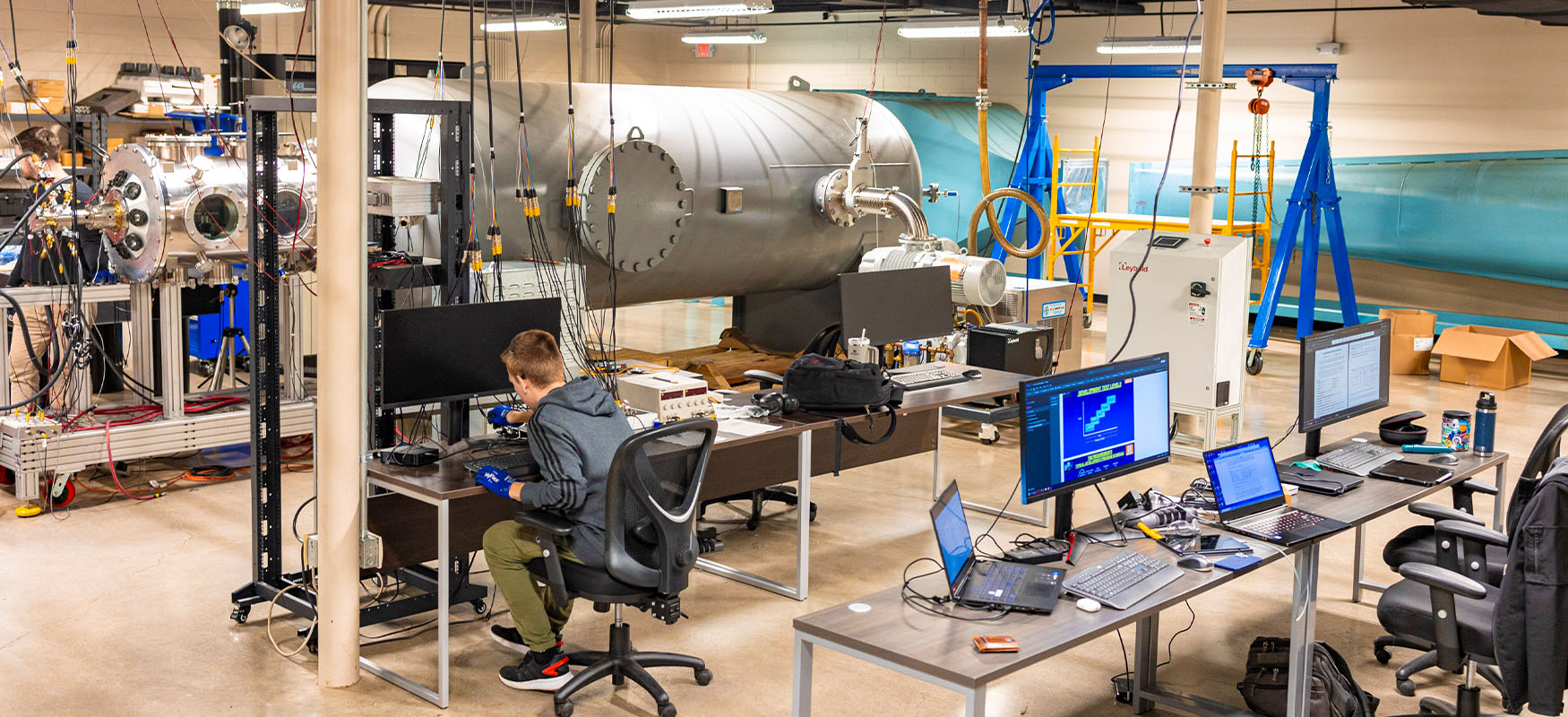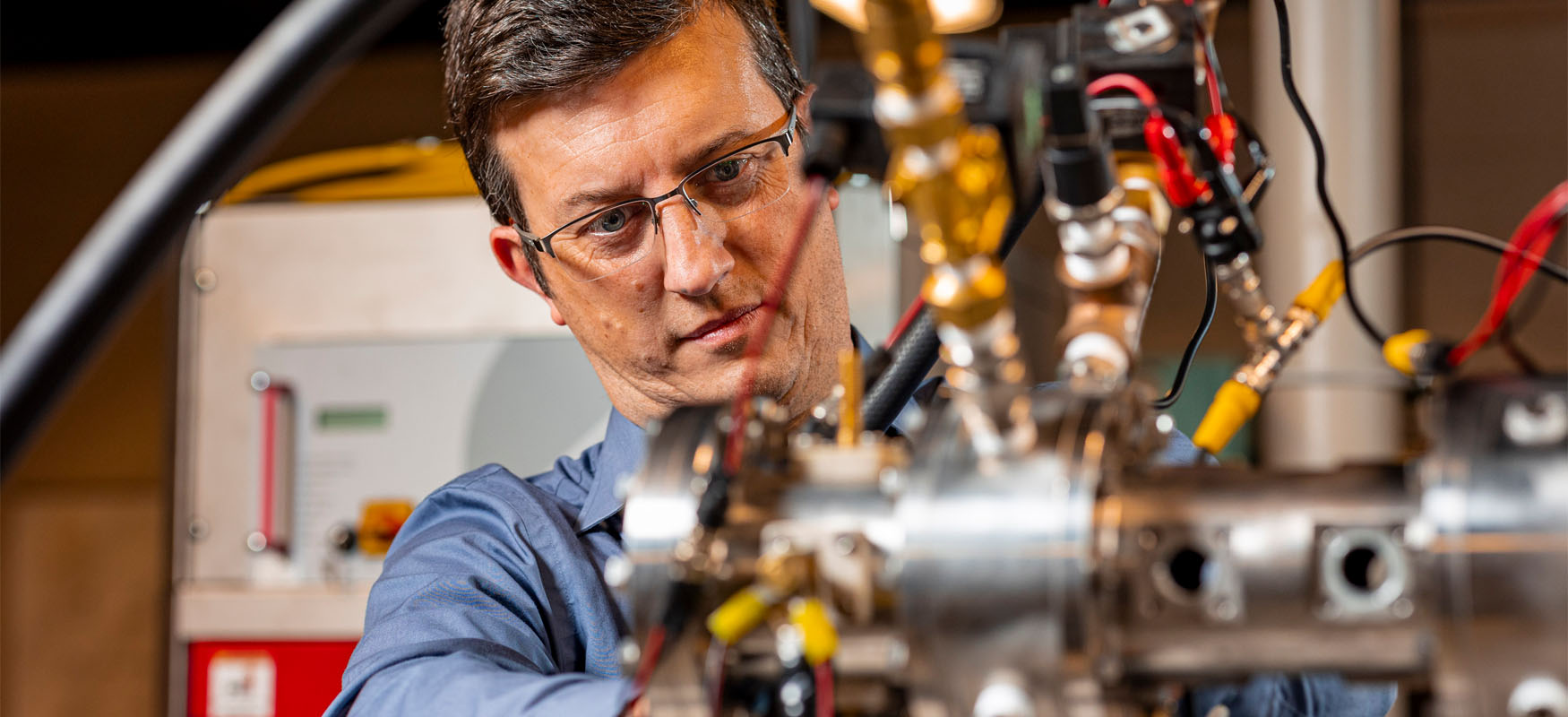Lab Upgrade Launches UT into Rarified Air Among Universities
Fueled by a monetary award from the Defense University Research Instrumentation Program, the University of Tennessee is poised to move to the forefront of hypersonic research and testing.
The university’s 500-kW pulsed Arcjet Tunnel, which resides in the lab of Mechanical, Aerospace and Biomedical Engineering Assistant Professor Damiano Baccarella, will be upgraded to a continuous flow facility over the next year. The upgrade is sponsored by the US Army Research Office through the DURIP award. UT received a $570,000 grant to cover the cost of the equipment needed to extend the capabilities of the lab. The upgraded continuous flow tunnel will be capable of long-duration aerothermal tests for high-temperature material screening and characterization.
“This type of facility is very rare in the academia community. There are very few in the country, literally less than five for the scale we are talking about,” Baccarella said. “It’s not common at all and that is one of the problems for the people developing materials designed for hypersonic flights and atmospheric re-entry. They need more testing capabilities to assess the properties of what they are doing. They are constantly looking for partnerships with laboratories that have these capabilities.”

One example of those partnerships is an ongoing collaboration between Baccarella and researchers at Oak Ridge National Laboratory to perform aerothermal tests of the new materials they develop.
The Department of Defense announced the DURIP awards in December of 2023, with a total of $161 million going to 281 university researchers. The program “equips universities to perform state-of-the-art research that boosts the United States’ technological edge, while ensuring that the future science, technology, engineering, and mathematics workforce remains second to none.”
The Arcjet Tunnel is a general-purpose, Mach 6, high-enthalpy hypersonic facility that has been operational since 2022 as part of the Hypersonics and Propulsion Laboratory at UT. The tunnel has been running in pulsed mode, with test time limited to 500 milliseconds up to 1 second, to study the reaction of materials to extreme conditions.
“That is enough time to do a lot of stuff, but not everything. For some applications, we would need to have a longer duration of the test like tens of seconds to several minutes,” Baccarella said. “The grant we received to upgrade the lab will allow us to extend the test time to the longer durations.”
The main upgrades enabled by the grant are the addition of a pressure recovery system (diffuser), the upscaling of the vacuum pumping system, and the addition of water cooling to the components of the facility to manage the heat loads induced by the plasma flow. Most of the design and installation of the new components will be performed internally by Baccarella’s research group at UT. Baccarella anticipates everything will be up and running by the summer of 2025.
Baccarella has been working in collaboration with the UT Space Institute and Arnold Air Force Base in Tullahoma, Tennessee. The upgraded UT lab is part of a bigger plan that will help them understand how to build an even larger-scale version of the tunnel in the future.
The upgraded lab will put UT students on the cutting-edge of research and give them the tools needed to excel beyond the classroom.
“This is a field right now that is expected to be growing, both on the material development side and the testing side,” Baccarella said. “Hypersonic is a national priority for the Department of Defense right now and they are expecting both the government and private companies to be expanding the workforce a lot in the next few years. So, this type of research will provide students with a rather unique experience at the college level.”
Contact
Rhiannon Potkey (865-974-0683, rpotkey@utk.edu)
